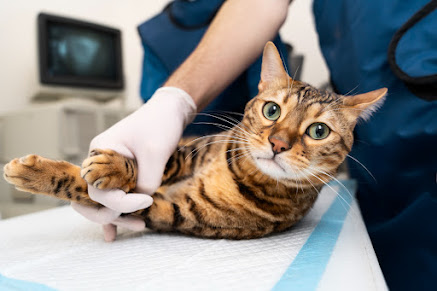The Symptoms, Causes, Diagnosis, and Treatment of Stud Tail in Cats.
Stud tail is a condition that affects male and female cats alike, but is more commonly observed in intact males. It is characterized by the development of an oily, greasy, or waxy substance on the base of the tail. This condition, although not life-threatening, can cause discomfort and lead to other skin problems if left untreated. In this article, we will delve into the symptoms, causes, diagnosis, and treatment options for stud tail in cats, providing a comprehensive understanding of this condition.
Understanding Stud Tail:
Stud tail, also known as tail gland hyperplasia or supracaudal gland hyperplasia, is a condition in which the sebaceous glands located at the base of the tail become overactive. These glands are responsible for producing an oily substance that helps lubricate the skin and hair. When the sebaceous glands produce an excess of sebum, it can lead to the development of stud tail.
Symptoms of Stud Tail:
Greasy or waxy substance: The most prominent symptom of stud tail is the accumulation of an oily, greasy, or waxy substance at the base of the tail. This substance may have a foul odor and can cause the hair in the affected area to appear matted or clumped together.
Hair loss and skin irritation: In some cases, the excessive production of sebum can lead to hair loss or thinning of the fur around the tail. The affected skin may also become red, inflamed, or irritated.
Swelling and abscesses: In severe cases, the buildup of sebum can cause swelling or the formation of abscesses at the base of the tail, leading to pain and discomfort for the cat.
Causes of Stud Tail:
The exact cause of stud tail is not fully understood, but several factors are believed to contribute to its development:
Hormonal imbalance: Hormonal fluctuations, particularly increased levels of androgens (male hormones), are thought to play a significant role in the development of stud tail. This is why intact male cats are more commonly affected, although spayed females can also develop this condition.
Poor grooming habits: Cats with poor grooming habits or those that are unable to reach the base of their tails due to obesity or other physical limitations are more prone to developing stud tail.
Environmental factors: Certain environmental factors, such as high humidity or exposure to substances that disrupt hormone levels, may contribute to the development of stud tail.
Diagnosis of Stud Tail:
To diagnose stud tail, a veterinarian will typically perform a thorough physical examination of the cat, paying close attention to the base of the tail. The veterinarian may also conduct additional tests, such as skin scrapings or bacterial cultures, to rule out other underlying causes of the symptoms.
Treatment of Stud Tail:
The treatment of stud tail aims to reduce the production of sebum, alleviate symptoms, and prevent complications. The following treatment options may be recommended:
Gland expression: In mild cases, the veterinarian may manually express the impacted glands to remove the excess sebum. This can provide temporary relief and improve the cat's comfort.
Medicated shampoos: Specialized shampoos containing degreasing agents or antibacterial properties may be prescribed to clean the affected area and reduce the buildup of sebum. Regular bathing with these shampoos can help manage stud tail.
Hormonal therapy: In cases where hormonal imbalances are suspected to be the underlying cause of stud tail, hormonal therapy may be prescribed. Medications that regulate hormone levels can help control sebum production and prevent recurrences.
Spaying or neutering: For intact cats, spaying or neutering is often recommended to prevent the recurrence of stud tail. Removing the reproductive organs can help balance hormone levels and reduce the risk of developing this condition.
Environmental modifications: Creating a clean and hygienic environment for your cat, ensuring regular grooming, and maintaining optimal weight can contribute to the prevention and management of stud tail.
Prevention of Stud Tail:
While stud tail cannot be completely prevented, certain measures can reduce the risk of its development:
Spaying or neutering: Having your cat spayed or neutered can help regulate hormone levels and reduce the likelihood of stud tail.
Regular grooming: Encourage and assist your cat in maintaining proper grooming habits, especially in hard-to-reach areas like the base of the tail.
Clean and dry environment: Ensure that your cat's living environment is clean, dry, and well-ventilated, as excessive humidity can contribute to the development of stud tail.
Conclusion:
Stud tail is a condition that can affect both male and female cats, but is more commonly observed in intact males. Although not life-threatening, it can cause discomfort and lead to other skin problems if left untreated. By recognizing the symptoms, understanding the causes, seeking proper diagnosis, and following appropriate treatment, you can effectively manage stud tail in your feline companion. Regular veterinary care, proper grooming, and maintaining a healthy environment will contribute to your cat's overall well-being and reduce the risk of recurrence.

.png)




